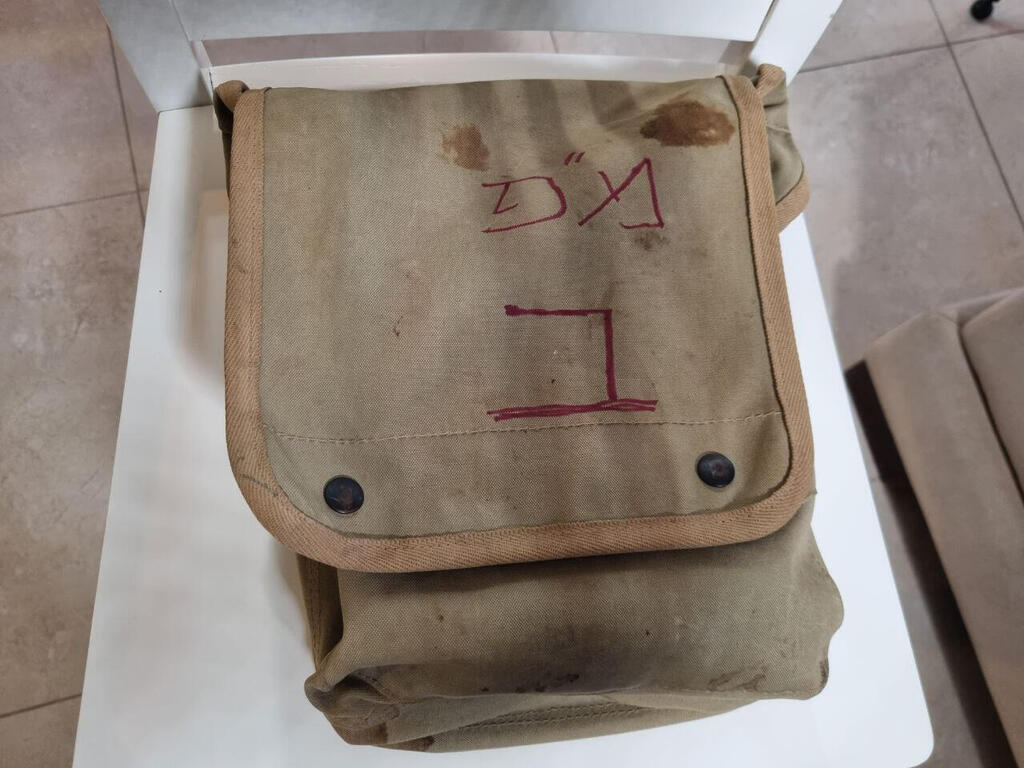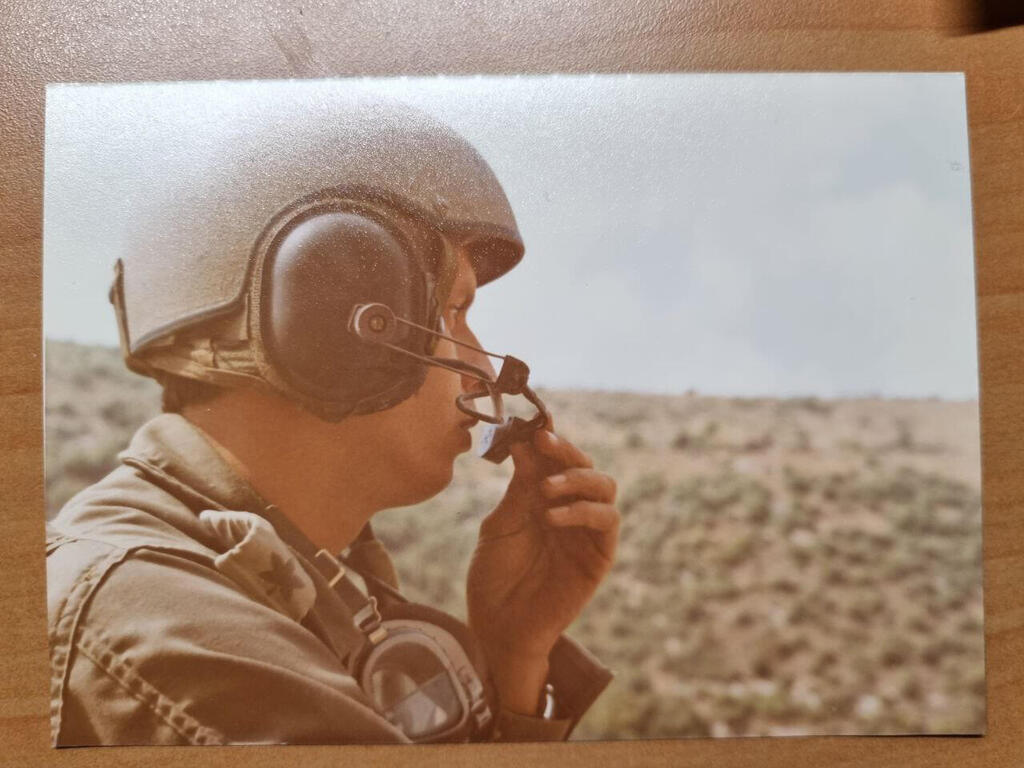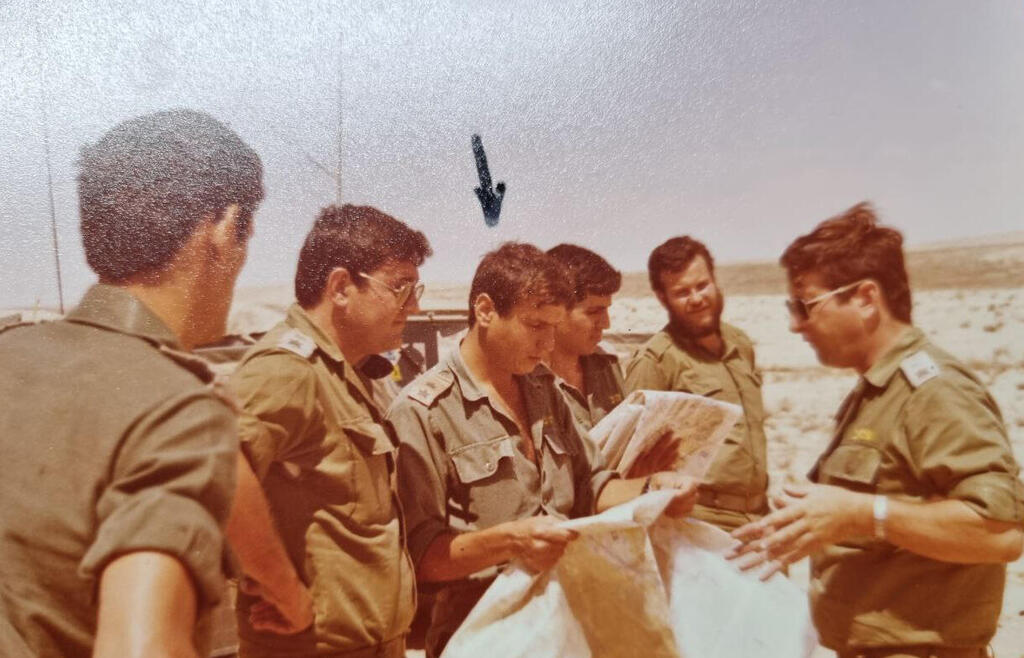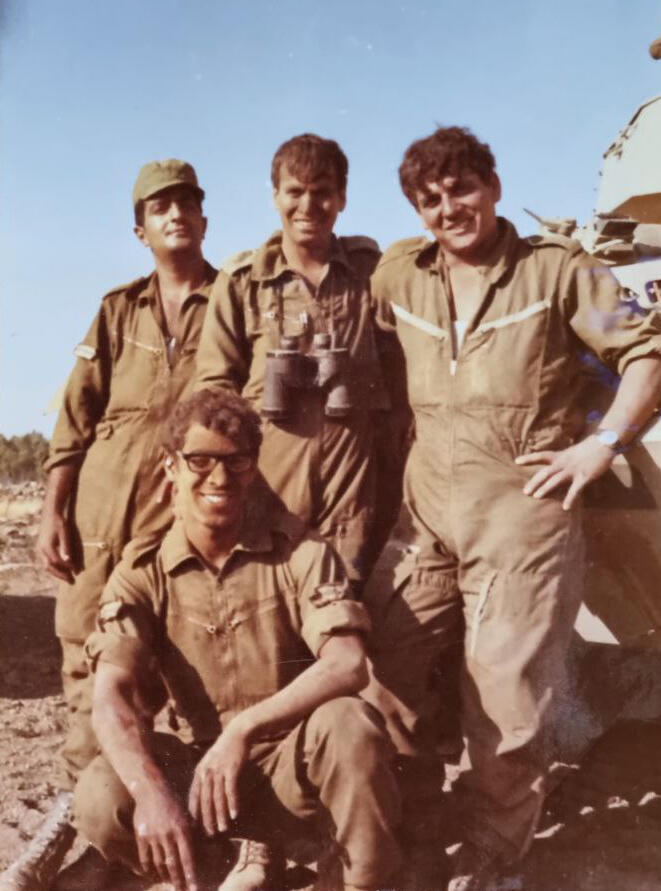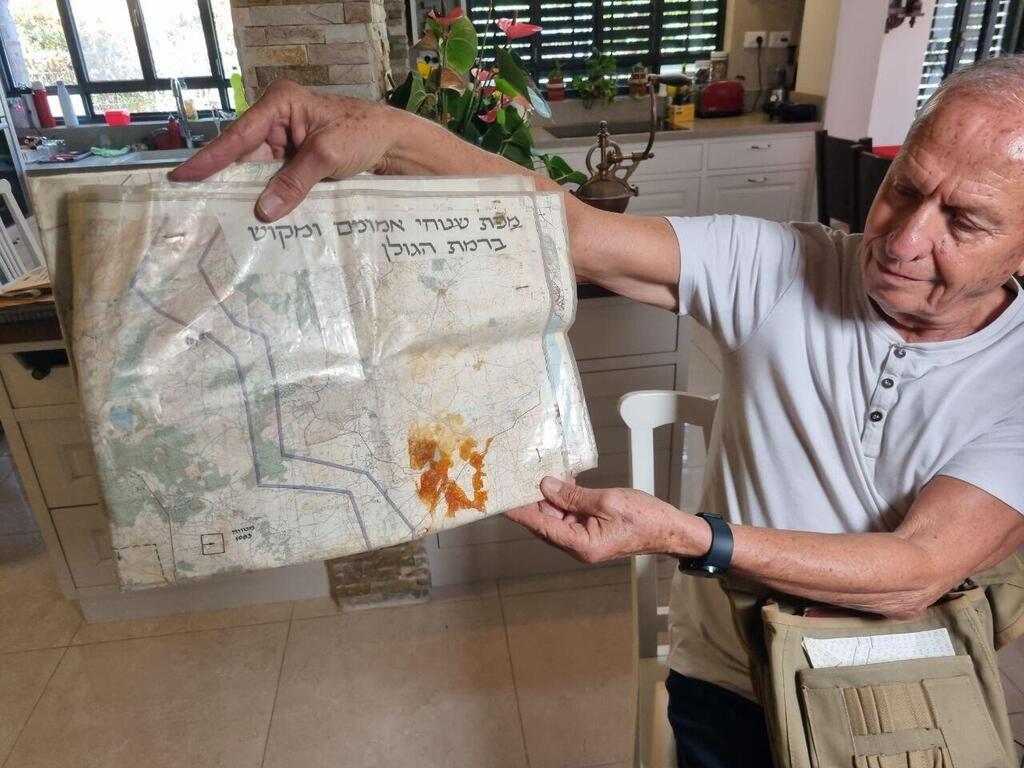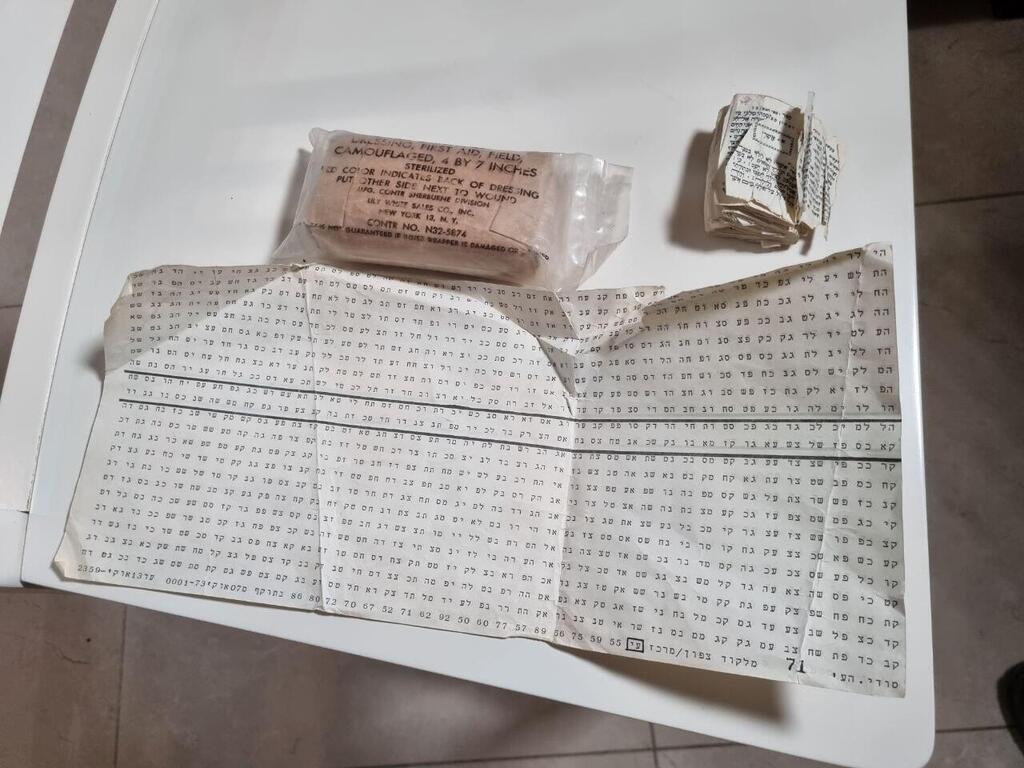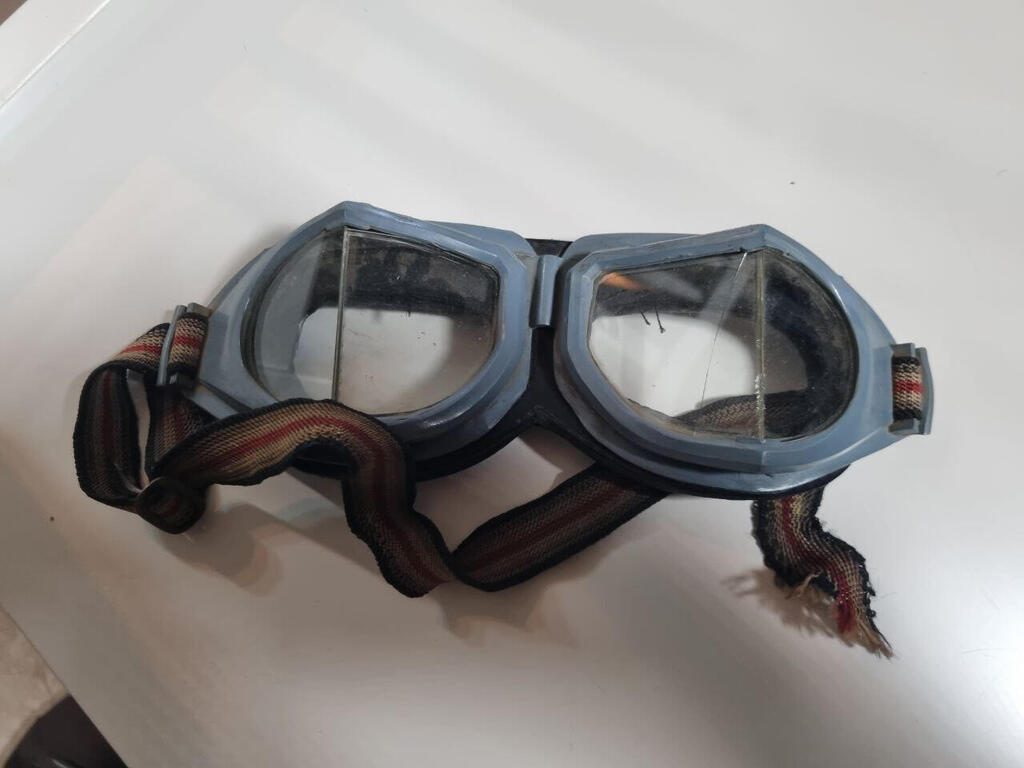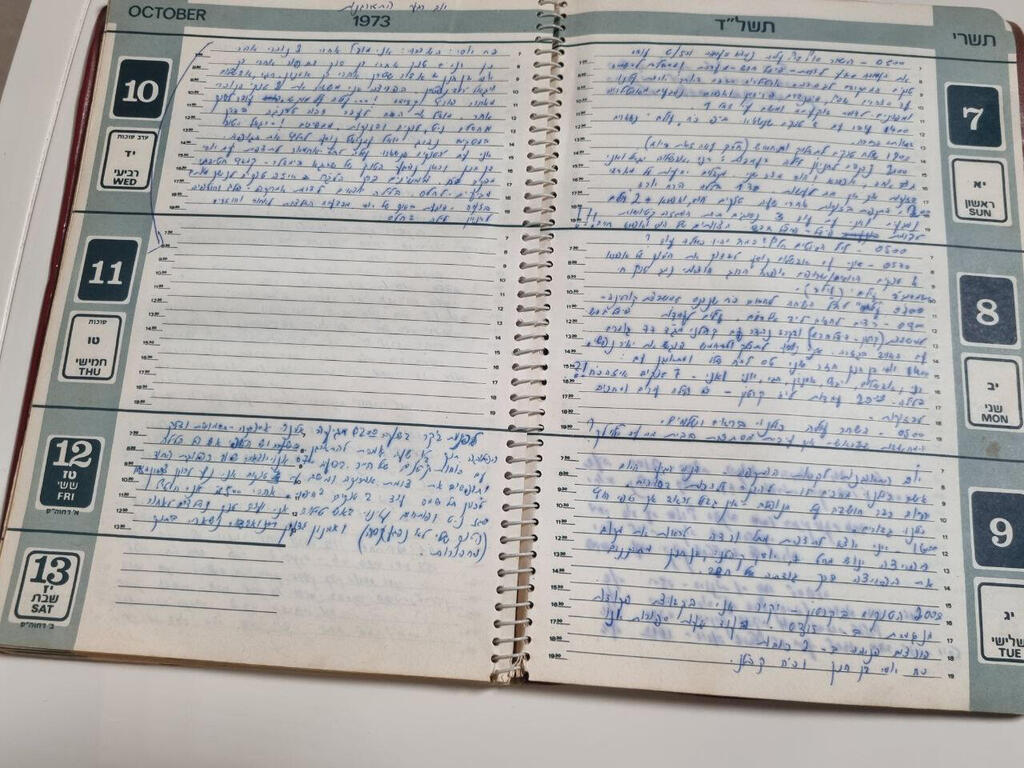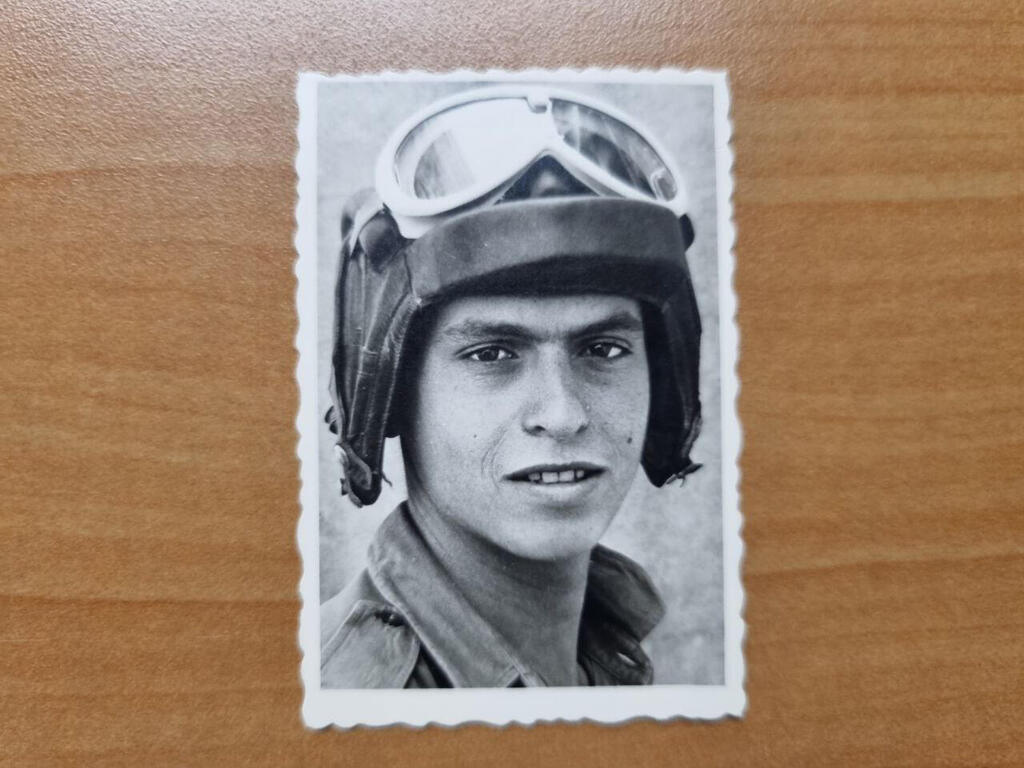On October 6, 1973, the day the Yom Kippur War broke out, Avner Landau was a platoon commander in the 188th Brigade. Alongside his soldiers, he was on the Golan Heights, and mere minutes before the Syrian bombardments began, he was rushed to the battle positions. Fifty years after those battles, during one of which he was seriously injured, he opened his officer's bag for the first time and revisited the memories from the war.
Read more:
‘We were very surprised there was going to be war’
In the top and far corner of a wardrobe in the Landau family's bedroom in Kiryat Haim, Haifa, sits the officer's bag. A small side bag in khaki color, it has dried blood stains on it and a strong smell of war and dust. "The bag is like a time capsule from the Yom Kippur War, and it has been lying there, with my wife always asking, 'Why don't you open that bag?'"
The moment the bag was opened, the memories also flooded back. "The war caught me and my platoon in the Merom Golan area. Seven minutes before 2:00 PM, we saw the planes attacking and took our positions. We were very surprised that there was going to be a war. The first battle began and lasted for five days; luckily, we only had two casualties."
Landau was convinced it was just a single day of combat. So as not to "displease his commanding officer", he instructed his platoon to place tires on the road as they moved to their positions, to avoid damaging the road. A few hours later, during heavy shelling and after reports arrived from the southern front, the Armored Corps' commander realized it was an entirely different kind of battle.
"After the first day of the war, following the capture of Mount Hermon by the Syrian commandos, Syrian observation officers were stationed there and directed horrific fire at us. At times, an entire artillery battery would fire at us," Landau recalled. "But I never closed the hatch (the tank's top door). I was the commander; if I closed it, I wouldn't see the tanks and wouldn't be able to control them."
On the fourth day of the war, while the defensive battles were still ongoing, Landau decided to disobey an order. "The brigade commander sent me to retrieve two tanks that were hit and left stranded. I told him, 'We'll do it in another hour, at daylight.' So he sent another squad, led by Gideon Weiler. Almost all of that squad were wiped out."
"I read the terrain and knew I shouldn't enter that trap set by the Syrian commandos. True, on one hand, it's anarchy, but on the other, I was protecting my soldiers, and you have to find the right balance," Landau explained his decision. "In retrospect, 11 of my soldiers survived while 11 others were killed."
The day after, the brigade's soldiers entered the bunker with the aim of switching from defense to offense. Two days later, during the battle at Tel al-Shams, Landau was injured. "We were hit by Sagger missiles and chaos ensued. The commander was killed, and I lost consciousness. I woke up in the hospital with my officer's bag on my bed."
‘When the war starts, everyone is confused’
Landau opened the bag and pulled out an authentic map showing the Syrian enemy's positions on the Golan Heights. This map was created only three days before the war broke out, but one can still easily read the markings in red marker on the nylon.
"I remember the intelligence girl handed us the map at the brigade and it was all in red," Landau recounted. "She told me she thinks there's going to be a war, and I told her we had our orders and she was wrong."
Alongside the enemy's map, there's also a topographical map of the northern Golan Heights. A quick glance at the old map reveals a dried, thick bloodstain coincidentally marking the exact location of the last battle in which Landau participated. This coincidence surprises even him, "Really strange, this is the first time I'm seeing this."
Landau continues to search inside the bag and pulls out a "communication sheet" made of plastic with an array of rectangles containing letters and numbers, an aging yellowed A4 paper that has nicknames and code names for standard reporting words, and a document that contains archaic code names based on fruits. Going on alert was termed "Banana", while returning to routine was called "Guava".
"Instead of soldiers, you say 'matches', a road was 'black', but no one talked like that during the war. Everyone shouted over the radio and used personal names. For instance, the code for precise artillery fire was 'Swing', but of course, I didn't report 'Swing', I screamed over the radio that they're shooting at us," Landau reminisced. "Everyone spoke freely on the radio, and I think that really helped the enemy locate and hurt us."
He returns to the bag and pulls out a pair of dusty goggles. Landau couldn't resist and immediately tried them on. "Unbelievable, they're full of war dust." He continues and takes out a tiny, tattered Book of Psalms. "I'm not a religious person, but I deeply respect this. Rabbi Shneior gave me this book about a week before the war started, and I took it into battle with me."
Also inside the bag is a prismatic compass, considered luxurious at the time, and it's in excellent condition. After dusting it off, one can see it has luminescent markings for working in complete darkness. "Personally, I didn't touch this compass throughout the war. I'm not great at navigation, and during battles, I often asked people around me where we were on the map."
‘Today it's okay to cry'
The last item to come out of the bag is the personal journal Landau kept after he was injured, recounting his wartime experiences. "My wife worked at Mekorot (the national water corporation) back then and brought me one of their journals. In the hospital, I wrote a bit to remember everything that happened."
Landau opened the yellowing pages of the diary with emotion and began to read a few lines. "October 10, Yossi Ben Hanan force (who commanded the 53rd battalion during the fighting). I'm leading the platoon and the entire force, and two foreign tanks supposed to clear mines. I charge forward, hit a mine and immediately move with the remnants of the crew to another tank, and we continue to fight. The good Yigal Rubinstein was killed, Emanuel went to retrieve the body. I ascend with Yossi Ben Hanan to observe, and here the tank of Shraga Eibler is hit, who was killed a few days after the day he was supposed to get married."
After this line, Landau couldn't continue reading from the diary. The vivid description of the tough fighting, the pain and the loss brought tears to his eyes. "I remember my heart breaking at that moment. A few months after the war, I returned for a visit to the battalion and saw Shraga's wedding invitation on my table."
"Today it's okay to cry; during the fighting, life goes on as usual. I had to command my platoon and continue handing orders," Landau recounted. "For fifty years, I didn't speak of that war. I raised a family in Israel, have children and grandchildren, and I never told anyone about what happened there. Suddenly now, it burns within me."
WHERE ISRAEL STANDS NOW 50 YEARS ON - AMIR AVIVI
(ILTV)


